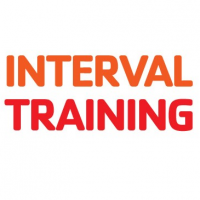Jennifer Sage and Jennifer Klau, PhD, teamed up to write this series on interval training. Dr. Klau will ensure that we include the latest scientific knowledge so instructors will know this is the most up-to-date information on interval training available. At the start of every post, we will include a glossary for easy reference.
Glossary
Aerobic: Using oxygen
Anaerobic: Without oxygen
Glycolysis: 10-step cycle that breaks down glucose into energy. Can operate aerobically or anaerobically
TCA/Krebs Cycle: Intermediate cycle in the aerobic pathway between glycolysis and ETC
ETC: Electron transport chain. Final sequence of aerobic pathway, site of actual O2 use
LT: Lactate threshold. Exercise intensity at which lactate production exceeds lactate clearance
VO2 Max: Maximum rate at which O2 can be taken up and used by the body. Expressed in either L・kg -1 (absolute) or ml・kg・min -1 (relative, allows comparison between individuals). Considered a predictor of endurance performance, upper limits are genetically constrained, training can only increase this to the genetic limit.
Exercise Physiology for Interval Training: Part 1
Knowledgeable instructors are effective instructors. Deepening your understanding of exercise physiology allows you to be that capable teacher whose students achieve their fitness, weight loss, health, or performance goals. When you know how human metabolic systems operate and how to harness them in a training session, your classes will be purposeful and your participants will feel confident following your lead.
The Body’s Energy Systems
Let’s take a quick look at the energy systems in the body that can be improved with proper training. Note that this is a very brief description of exercise physiology; we recommend that you enhance your knowledge through some of the resources listed at the end of this article.
One of the key questions to consider with any kind of training is what are you doing? Perhaps not in the grand, existential sense (though that’s useful too), but acutely. Now. What are you trying to accomplish with any particular training program and/or individual workout?
It is also critical that an instructor recognize that no matter how solidly grounded your workout may be in training principles, everyone responds differently to stimuli. As instructors, we must learn to explain the principles as clearly as we are able, while giving our students the space and trust to figure out what is best for THEM on any given day.
As we delve into the current research on training in general and interval training in particular, you may be struck by the different findings from different studies. This is to be expected; some used highly trained athletes, others studied sedentary folks or those with risk factors or specific diseases (e.g, type 2 diabetes). Some studies standardized the volume of training, others the time or the calories burned. Don’t worry, we’ll guide you through the interpretation of the findings, but be aware that with the exception of minimizing the amount of time spent sitting, there is no such thing as a recommendation that does all things for all people.
To the basics: the human body is remarkable at turning chemical energy (aka food) into mechanical energy (muscle work). This keeps us alive and allows us to do things. In this article, we are addressing the skeletal muscles, aka muscles under voluntary control. The muscles of the lungs, the digestive organs, and the heart also require energy, but they operate automatically and are outside the scope of these articles.
Muscles need energy to contract. To be precise, muscles need energy to release a contraction and set up for the next one. Muscles use a specific, high-energy molecule called ATP (adenosine triphosphate) to get their work done. As the name suggests, there are three phosphates bound to an adenosine backbone.
There are three energy systems that produce the necessary energy. These are the aerobic pathway and two anaerobic pathways: glycolysis and the ATP-CP system. Although we refer to them separately, glycolysis is really the first part of the aerobic metabolic pathway and can effectively be aerobic or anaerobic. How can you tell? By what emerges at the end of the process—lactate is the end product of anaerobic glycolysis and pyruvate is the end product of aerobic metabolism.
Just to make things crazier, glycolysis doesn’t use oxygen in either case. Huh? That’s because glycolysis is the initial step in the linked chain of energy metabolism.
Let’s look at these three energy systems a little closer.
Part 2 of our exercise physiology for interval training series will cover the lactate system and VO2 max.
Additional Resources:
- Total Heart Rate Training, Joe Friel. Ulysses Press, 2006.
- Physiology of Sport and Exercise, Jack Wilmore, David Costill, W Larry Kenney, Human Kinetics, 2008
- Make sure to listen to the interviews on Heart Rate Training Basics with Dr. Jennifer Klau, part 1 (free) and part 2 (members).
- Visit humankinetics.com for a variety of print and ebook resources.

